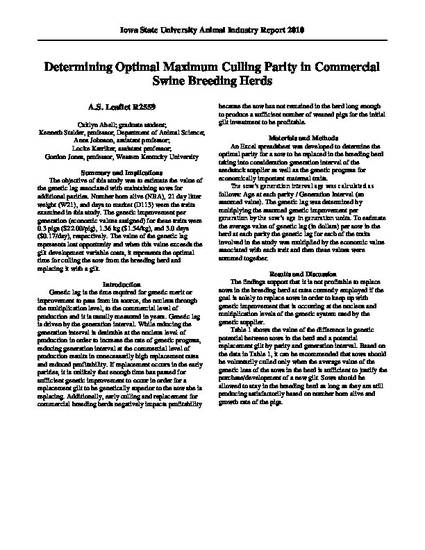
Unpublished Paper
Determining Optimal Maximum Culling Parity in Commercial
Swine Breeding Herds
Animal Industry Report
Extension Number
ASL R2559
Publication Date
2010
Disciplines
Topic
Swine
Summary and Implications
The objective of this study was to estimate the value of the genetic lag associated with maintaining sows for additional parities. Number born alive (NBA), 21 day litter weight (W21), and days to market (D113) were the traits examined in this study. The genetic improvement per generation (economic values assigned) for these traits were 0.3 pigs ($22.00/pig), 1.36 kg ($1.54/kg), and 3.0 days ($0.17/day), respectively. The value of the genetic lag represents lost opportunity and when this value exceeds the gilt development variable costs, it represents the optimal time for culling the sow from the breeding herd and replacing it with a gilt.
Copyright Holder
Iowa State University
Copyright Date
2010
DOI
https://doi.org/10.31274/ans_air-180814-31
Language
en
Citation Information
Caitlyn Abell, Kenneth J. Stalder, Anna K. Johnson, Locke A. Karriker, et al.. "Determining Optimal Maximum Culling Parity in Commercial
Swine Breeding Herds" (2010) Available at: http://works.bepress.com/kenneth_stalder/86/
